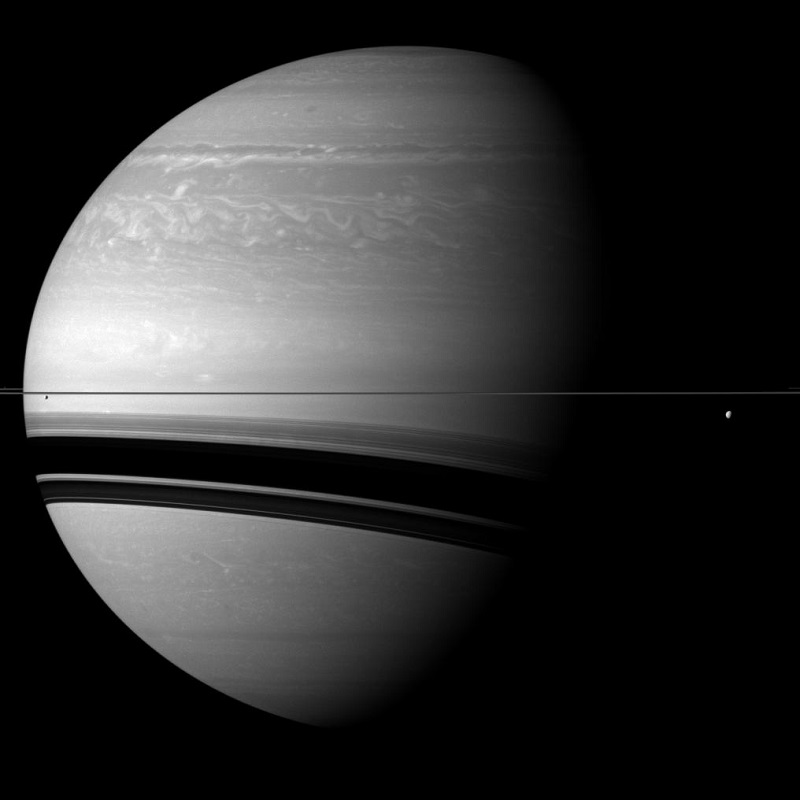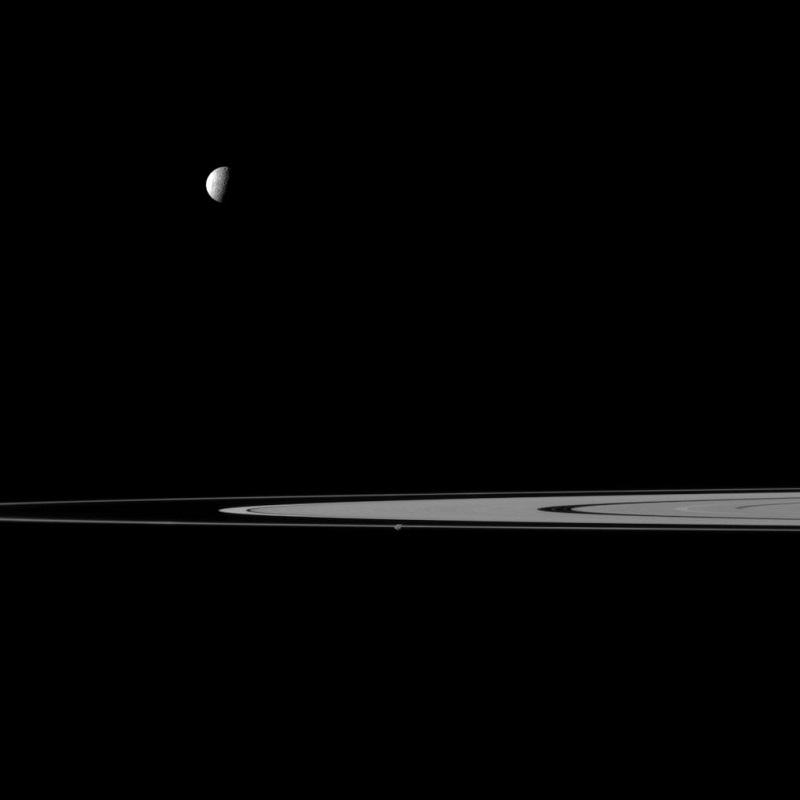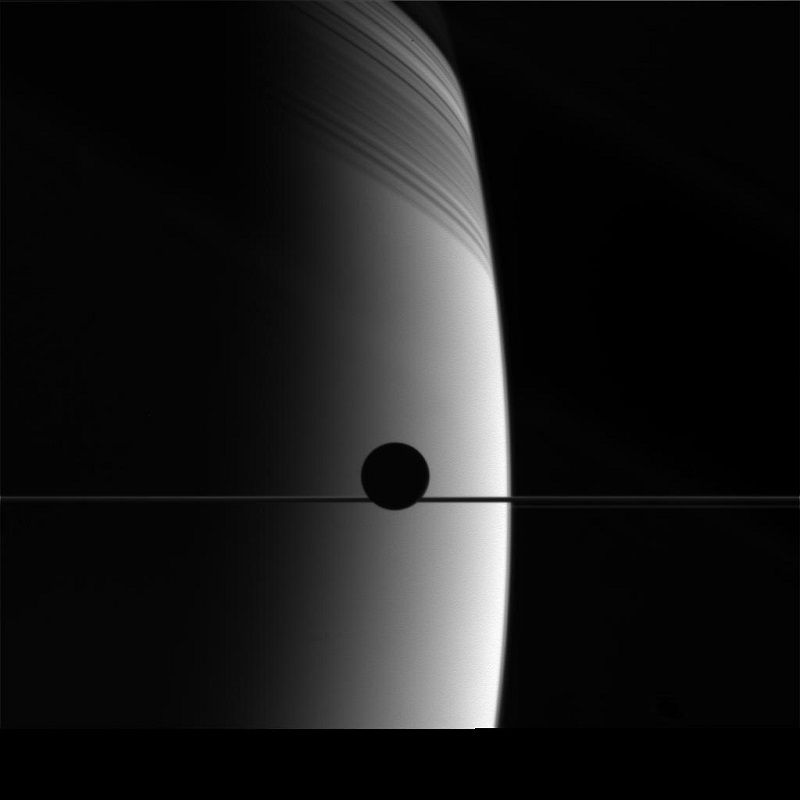NASA dixit:
“December 7, 2011. Compared to the gas giant, the two moons shown on either side of Saturn seem particularly small in this Cassini spacecraft view. Tethys (660 miles, or 1,062 kilometers across) is on the right of the image, below the rings. Smaller Enceladus (313 miles, or 504 kilometers across) is on the left of the view, below the rings. Pandora (50 miles, or 81 kilometers across) is also present in this view but is barely visible. It appears as a small grey speck above the rings on the extreme left edge of the image. Pandora has been slightly brightened by a factor 1.2 relative to the rest of the image. This view looks toward the northern, sunlit side of the rings from just above the ringplane.
The image was taken with the Cassini spacecraft wide-angle camera using a spectral filter sensitive to wavelengths of near-infrared light centered at 752 nanometers. The view was obtained at a distance of approximately 1.3 million miles (2.1 million kilometers) from Saturn. Image scale is about 77 miles (124 kilometers) per pixel.”
“After almost 20 years in space, NASA’s Cassini spacecraft begins the final chapter of its remarkable story of exploration: its Grand Finale. Between April and September 2017, Cassini will undertake a daring set of orbits that is, in many ways, like a whole new mission. Following a final close flyby of Saturn’s moon Titan, Cassini will leap over the planet’s icy rings and begin a series of 22 weekly dives between the planet and the rings.
No other mission has ever explored this unique region. What we learn from these final orbits will help to improve our understanding of how giant planets – and planetary systems everywhere – form and evolve.
On the final orbit, Cassini will plunge into Saturn’s atmosphere, sending back new and unique science to the very end. After losing contact with Earth, the spacecraft will burn up like a meteor, becoming part of the planet itself.
Cassini’s Grand Finale is about so much more than the spacecraft’s final dive into Saturn. That dramatic event is the capstone of six months of daring exploration and scientific discovery. And those six months are the thrilling final chapter in a historic 20-year journey.”
Image credit: NASA












 Subscribe to blog posts using RSS
Subscribe to blog posts using RSS










